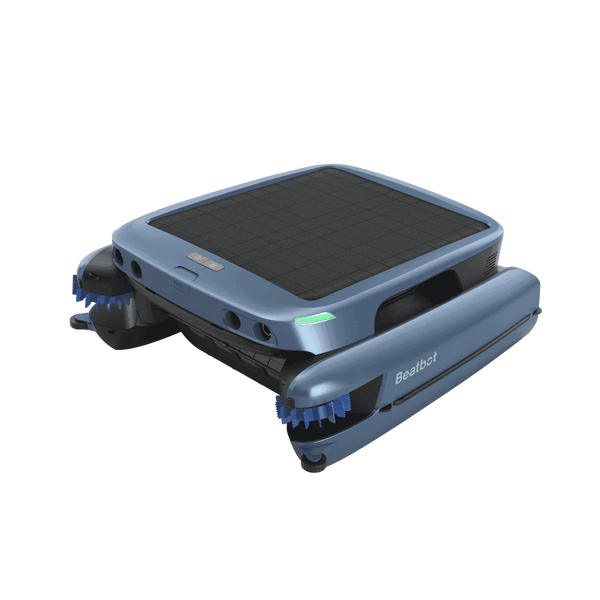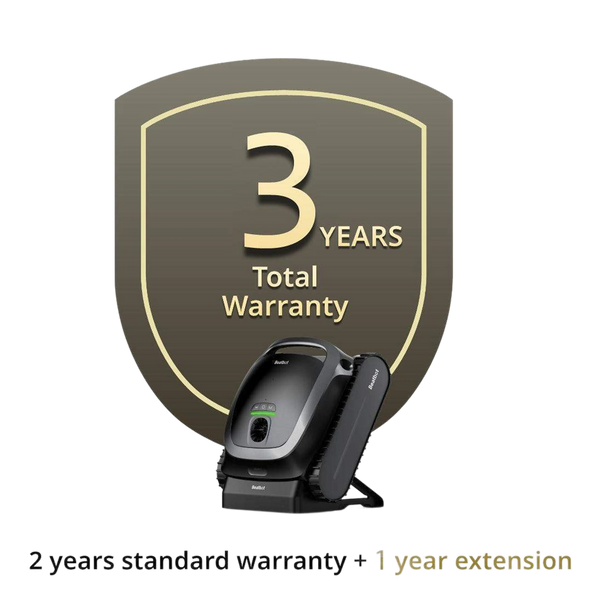Do Robotic Pool Cleaners Use a Lot of Electricity?
In an age where energy efficiency is not just valued but essential, the question of how much electricity robotic pool cleaners use is pertinent for environmentally conscious homeowners. This article investigates the energy consumption of swimming pool robot cleaners , contrasting their usage with traditional cleaning methods and providing actionable insights to enhance their energy efficiency.
Table of content
Understanding the Energy Consumption of Swimming Pool Robot Cleaners
Robotic pool cleaners are engineered to offer an automated solution to pool maintenance, yet their energy consumption can vary significantly based on their design and operational features.
Advanced models incorporate energy-saving technologies such as efficient motors and intelligent navigation systems that optimize cleaning paths and reduce operational time, thereby conserving electricity.
On the other hand, older or more basic models might lack these innovations, resulting in less efficient energy use. The type of cleaner you choose, therefore, plays a pivotal role in determining your pool's energy footprint.

In addition to model-specific characteristics, the operational settings selected by the user also impact energy consumption.
Many robotic cleaners provide various modes tailored to different cleaning needs, from light touch-ups to intensive deep cleans.
By selecting the mode that best suits the current state of your pool, you can avoid overuse of energy-intensive settings, optimizing your cleaner's energy use.
Understanding these variables allows pool owners to make informed decisions, balancing effective pool maintenance with energy efficiency and contributing to both cost savings and environmental sustainability.
Factors Influencing the Energy Usage of Your Pool Robot Cleaner
Several aspects determine the amount of electricity your pool cleaner will consume. Let's explore these factors to help you gauge their impact on energy usage:
Cleaner Model and Technology
Advanced swimming pool robot cleaners equipped with smart navigation and efficient cleaning patterns not only reduce cleaning time but also conserve energy.
Features like auto-shutoff, energy-efficient motors, and optimized cleaning paths distinguish these advanced models from their power-intensive counterparts.
Cleaning Cycle Duration
Extended cleaning cycles can lead to higher energy consumption.
The ideal robotic cleaner achieves a balance between thorough cleaning and energy efficiency by adjusting its cycle length based on the pool's size and specific characteristics.
It detects the pool's size, shape, and other specific features to devise the most optimized cleaning path, ensuring the entire pool area is cleaned efficiently.
This strategic adaptation allows the cleaner to conserve energy while effectively covering every part of the pool, guaranteeing no energy is wasted during the cleaning process.Extended cleaning cycles translate to higher energy consumption.
Frequency of Use
Regular use is essential for maintaining pool cleanliness, but overuse can hike up energy costs. Tailoring the cleaning frequency to your pool's specific needs can prevent unnecessary energy expenditure, striking a balance between cleanliness and conservation.
Pool Size and Complexity
The larger and more complex your pool's design, the harder your robotic cleaner has to work. Energy-efficient cleaners can adapt their routes to handle various shapes and obstacles, ensuring comprehensive cleaning without excess energy use.
Tips for Reducing Electricity Consumption of Your Pool Robot Cleaner
Optimize your robotic pool cleaner's operation with these energy-saving tips:
Optimize Cleaning Schedules
Establish a cleaning schedule that suits your pool's usage pattern. Most pools thrive on a bi-weekly cleaning regimen, although this can vary based on location, usage, and season.
Maintain Your Cleaner Regularly
Routine maintenance, such as clearing the filter and inspecting the brushes, ensures your cleaner operates at peak efficiency, preventing wasted energy from impaired performance.
Use Efficient Cleaning Modes
Select the most energy-conserving mode that still achieves your desired level of cleanliness. Avoid intensive modes unless necessary for addressing specific issues like algae blooms or after a pool party.
Upgrade to an Energy-Efficient Model
Modern pool cleaners are more energy-efficient than ever. Upgrading to a newer model can significantly reduce your pool's energy footprint while offering superior cleaning capabilities.
Significant Reduction in Energy Bills
Energy-efficient pool cleaners operate using less electricity, which translates to lower energy bills. Over the lifespan of the cleaner, this reduced energy requirement can accumulate significant savings. By optimizing energy use, these devices ensure that maintaining a clean pool doesn't lead to exorbitant electricity costs, providing economic benefits alongside operational efficiency.
Positive Environmental Contribution
Using an energy-efficient pool cleaner aligns your pool maintenance with eco-friendly practices. By consuming less power, these devices reduce your household's overall energy consumption and, consequently, its carbon footprint. In an era where environmental sustainability is increasingly crucial, choosing energy-efficient appliances is a responsible, impactful decision that contributes to a healthier planet.
Enhanced Durability and Longer Lifespan
Energy-efficient pool robot cleaners often feature advanced technologies that not only reduce energy consumption but also minimize wear and tear. This enhanced durability means that the cleaner is likely to last longer, providing better value for money and reducing the frequency of replacements. A longer lifespan not only saves you money in the long run but also means less waste, as fewer units need to be disposed of over time.
Frequently Asked Questions About Pool Robot Cleaners
How Much Electricity Does a Typical Pool Robot Cleaner Use?
While consumption varies, efficient models can operate on energy comparable to a standard light bulb, showcasing significant advancements in energy-efficient design.
Can I Leave My Pool Robot Cleaner in the Pool Indefinitely?
It's advisable to remove the cleaner after each cycle to prevent unnecessary wear, although some models are designed for prolonged immersion.
How Do I Know If My Pool Cleaner Is Energy Efficient?
Look for energy usage specifications or seek models with energy efficiency certifications or endorsements to ensure you're making an eco-conscious choice.
Conclusion
In conclusion, robotic pool cleaners, while indispensable for modern pool maintenance, do indeed consume electricity. However, their impact on both energy consumption and environmental sustainability can be significantly mitigated through informed choices and proper usage.
Selecting energy-efficient models equipped with smart technology allows for optimized cleaning paths and reduced energy use, while regular maintenance ensures these devices operate at peak efficiency, extending their lifespan and conserving energy.
Moreover, by tailoring the use of your pool cleaner to the specific needs of your pool—such as adjusting cleaning frequencies and selecting appropriate cleaning modes—you can achieve further energy savings. Ultimately, the judicious use of robotic pool cleaners not only supports your financial well-being through reduced energy bills but also aligns with environmentally responsible practices. By embracing these strategies, pool owners can contribute to broader energy conservation efforts, ensuring a cleaner, more sustainable future.
FAQs
I’m running my pool off-grid with solar power. Will a robotic cleaner drain my system?
Good news—most robotic cleaners sip power like a light bulb. I’d pick one with smart navigation, like the Beatbot AquaSense 2 Series, to keep run times short. Stick to lighter cleaning modes for daily use, and you’ll keep your solar setup happy without burning through too much juice.
My pool’s in a hot, sunny spot. Does that make my cleaner use more energy?
Hot weather can push the cleaner’s motor a bit harder, especially if debris piles up fast. I’d run shorter cycles during cooler parts of the day, like early morning, to ease the load. Also, keep the filter clean so the motor doesn’t overwork in that heat.
Can I use my robotic cleaner with my pool’s main pump to save energy?
You don’t need to run the main pump with a robotic cleaner—they’ve got their own motors. I’d turn off the pool pump while the robot’s working, like an AquaSense 2 Series, to cut energy use. It’s a nice way to keep your bill down while still getting a sparkling pool.
My cleaner’s battery dies fast in winter. Any way to stretch its charge?
Cold weather can sap batteries quicker. I’d store the cleaner indoors when it’s not in use and charge it in a warm spot. Go for standard cleaning modes instead of heavy-duty ones to save power during those chilly months.
I’ve got an old cleaner. Is it eating up more electricity than a new one?
Older models can be power hogs without the fancy tech in newer ones. I’ve seen newer cleaners with smart paths and auto-shutoff use way less energy. If your cleaner’s chugging electricity, upgrading to a modern one could save you some serious cash on your bill.
Relative Blogs
About the author


























